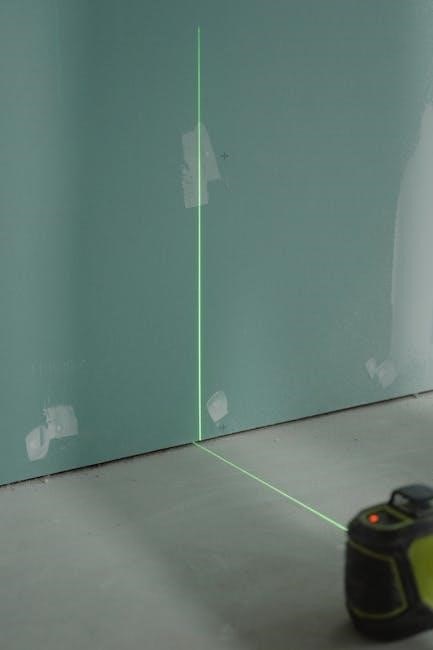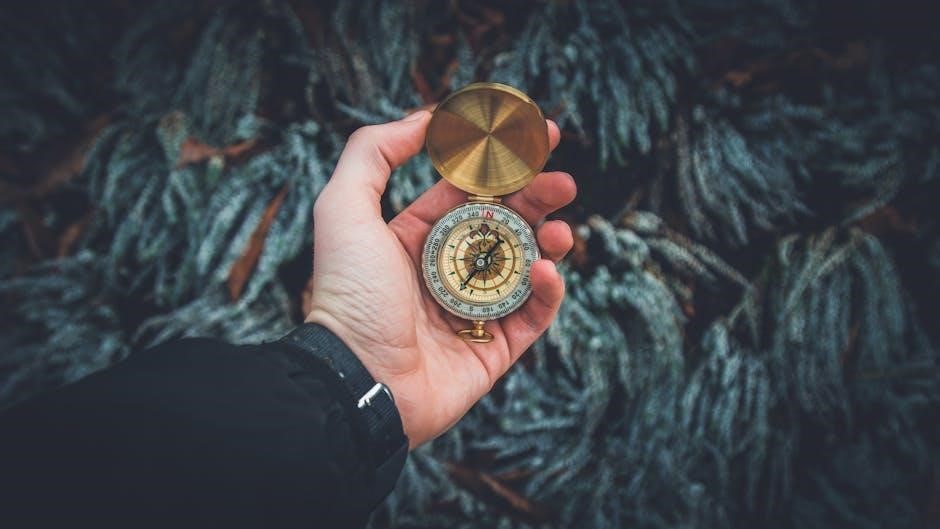An EQ frequency guide is essential for understanding how to balance and enhance audio. It helps professionals and hobbyists master frequency adjustments, ensuring clarity and precision in sound production.
What is EQ and Its Importance in Audio
Equalization (EQ) is a powerful audio tool used to adjust specific frequency ranges within a sound. By boosting or cutting frequencies, EQ enhances clarity, balance, and overall quality. It helps correct tonal imbalances, making instruments and vocals sit well in a mix. Proper EQ ensures a polished sound, whether in music production, live performances, or audio mastering. Understanding EQ is crucial for achieving professional results in any audio application.
A Brief History of EQ and Its Evolution
Equalization (EQ) originated in the early 20th century, initially used in telephone systems to correct frequency imbalances. By the 1970s, audio engineers began applying EQ to music, with innovations like the tilt tone control by Quad Ltd. The 21st century saw the rise of digital EQ, offering precise adjustments and versatility. Today, EQ is indispensable in music production, live sound, and film, with advanced features like parametric EQ enabling detailed sound shaping. Its evolution reflects the growing need for sonic precision across industries.

Understanding the Frequency Spectrum
The frequency spectrum spans 20 Hz to 20 kHz, divided into lows, mids, and highs. It guides EQ adjustments for balanced audio production.
Low Frequencies (20 Hz ─ 250 Hz)
Low frequencies (20 Hz ─ 250 Hz) shape the bass and warmth of audio. The 20-50 Hz range adds sub-bass and depth, while 50-100 Hz provides body and fullness. Between 100-250 Hz, adjustments can reduce muddiness or boominess, especially in instruments like kick drums and bass guitars. Properly EQing this range ensures a solid foundation without overwhelming the mix. Balancing these frequencies is crucial for clarity and energy in music production.
Mid Frequencies (250 Hz ― 3000 Hz)
Mid frequencies (250 Hz ― 3000 Hz) are crucial for clarity and balance in audio. The 250-500 Hz range adds warmth but can introduce muddiness if overemphasized. Boosting 500-1000 Hz enhances clarity, while 1000-2000 Hz affects presence and definition. Above 2000 Hz, adjustments influence brightness and detail. Proper EQ in this range ensures instruments like guitars and vocals sit well in the mix without sounding muddy or harsh. Balancing mid frequencies is key to achieving a clear and cohesive sound.
High Frequencies (3000 Hz ─ 20,000 Hz)
High frequencies (3000 Hz ― 20,000 Hz) define clarity, brightness, and airiness in audio. The 3000-5000 Hz range impacts presence and attack, while 5000-8000 Hz enhances detail and crispness. Above 8000 Hz, adjustments control sibilance and sparkle. High frequencies are vital for cymbals, strings, and vocals. Overboosting can cause harshness, so subtle adjustments are key. Properly balancing high frequencies ensures a polished and engaging sound without fatiguing the listener; This range is essential for achieving a professional and refined mix.

EQ Frequency Chart and Common Adjustments
An EQ frequency chart maps key frequency ranges and their characteristics. Common adjustments include boosting presence, cutting mud, and enhancing clarity. Each adjustment refines the sound for balance and coherence.
Key Frequency Ranges and Their Characteristics
Low frequencies (20-250 Hz) handle bass and weight, while mid frequencies (250-3000 Hz) manage body and clarity. High frequencies (3000-20,000 Hz) enhance brightness and detail. Each range has distinct characteristics, like warmth in lows, presence in mids, and airiness in highs. Understanding these ranges is crucial for precise EQ adjustments, ensuring balanced and polished audio. Proper use can resolve muddiness or harshness, elevating the overall sound quality.
Common EQ Adjustments for Different Instruments
For vocals, boosting 1-4 kHz adds clarity, while cutting 200-300 Hz reduces muddiness; Drums benefit from enhancing kick at 60-100 Hz and snare at 150-250 Hz. Guitars often need mid-cut (500-800 Hz) for space, with highs boosted (5-8 kHz) for detail. Bass adjustments focus on low-end weight (50-100 Hz) and mid-scoop (200-400 Hz) to avoid muddiness. Each instrument’s EQ depends on its role in the mix, ensuring balance and preventing frequency conflicts. Proper adjustments enhance clarity and definition, making the sound more cohesive and professional.
Using Parametric EQ Effectively
Parametric EQ offers precise control over frequency, gain, and Q for tailored sound shaping. It’s ideal for enhancing clarity, reducing unwanted resonance, and achieving balanced mixes across various audio sources.
What is Parametric EQ and How Does it Work?
Parametric EQ is an advanced equalization tool allowing precise adjustments to specific frequencies. Unlike basic EQs, it offers control over frequency, gain, and bandwidth (Q). This enables engineers to target exact sonic issues, enhancing or correcting tones with surgical accuracy. By isolating frequency ranges, parametric EQ ensures clarity and balance in mixes, making it indispensable for professional audio production. Its flexibility and precision make it a cornerstone in both mixing and mastering processes, helping achieve polished, professional sound quality across various genres and applications.
Best Practices for Using Parametric EQ
When using parametric EQ, start with small adjustments to avoid overcorrection. Use high-pass and low-pass filters to isolate specific frequency ranges. Always listen in context with the full mix; Boost sparingly and prefer cutting to remove unwanted frequencies. Use the Q control to target narrow or broad frequency ranges. Reference a flat EQ response to maintain perspective. Boost high frequencies cautiously to avoid harshness. Use A/B comparisons to evaluate changes. These practices ensure clarity, balance, and professional-sounding mixes.

EQing Specific Instruments and Sounds
EQing specific instruments and sounds involves tailoring frequency adjustments to enhance clarity and balance in a mix. Vocals, drums, guitars, and bass each require targeted EQ approaches to ensure optimal tone and presence, allowing each instrument to sit well within the overall mix.
EQ for Vocals and Human Voice
EQing vocals and human voice is crucial for achieving clarity and emotional impact. Boosting frequencies around 100-250 Hz adds warmth, while cutting 250-500 Hz reduces muddiness. Enhancing presence in the 5k-8kHz range improves intelligibility, and controlling sibilance at 5k-10kHz ensures smoothness. High-pass filtering below 80 Hz removes unwanted rumble. Using a parametric EQ allows precise adjustments to tailor the vocal tone, ensuring it stands out in the mix while maintaining naturalness. Reference an EQ frequency chart to guide your adjustments for optimal vocal processing.
EQ for Drums and Percussion
EQing drums and percussion is vital for creating a balanced and punchy sound. For the kick drum, boost around 60-100 Hz for low-end weight and cut 250-500 Hz to reduce muddiness. Snare drums benefit from enhancing the attack in the 5k-8kHz range and controlling the crack at 150-250 Hz. Hi-hats can be brightened by boosting above 10kHz, while reducing 5k-10kHz helps control sibilance. Toms are typically adjusted by boosting around 100-200 Hz for body and cutting 300-500 Hz to avoid muddiness. Use these frequency ranges to shape your drum mix effectively, ensuring clarity and energy in your recordings.

Advanced EQ Techniques
Advanced EQ techniques involve precise frequency sculpting and dynamic adjustments. They allow for creative sound transformation, ensuring balance and depth in professional audio production environments.
Using EQ for Creative Sound Design
EQ is a powerful tool for creative sound design, enabling artists to craft unique sonic landscapes. By strategically boosting or cutting specific frequencies, you can enhance texture, depth, and emotion in audio. For instance, boosting high frequencies can add clarity to percussion, while cutting mids can reduce muddiness in synth pads. EQ allows for precise manipulation, transforming raw sounds into polished, engaging elements that captivate listeners and elevate productions to new creative heights.
EQ in Mixing and Mastering
EQ plays a crucial role in both mixing and mastering, ensuring a balanced and polished sound. During mixing, EQ helps individual tracks sit well together by correcting imbalances and enhancing clarity. In mastering, it fine-tunes the overall frequency response for consistency across playback systems. Boosting high frequencies can brighten a mix, while cutting low-end rumble ensures tight bass. Proper EQ application in both stages is vital for achieving professional-sounding results, making it an indispensable tool in audio production workflows;
EQ Frequency Guide Conclusion
Mastering EQ requires practice and understanding of frequency ranges. Use EQ charts as a guide, but trust your ears for precise adjustments, ensuring balanced and clear audio;
Final Tips for Mastering EQ
Always start with subtle adjustments, as overcorrection can harm the sound. Use EQ charts as a guide but trust your ears for final decisions. Reference tracks can help you achieve desired tones. Experiment with automation to dynamically adjust frequencies during playback. Avoid boosting too much; cutting frequencies often yields cleaner results. Practice regularly to develop your listening skills and intuition. Remember, EQ is both art and science—balance creativity with technical precision for optimal sound quality.